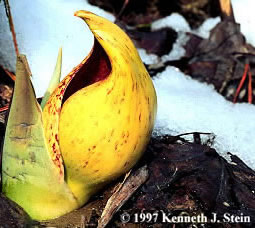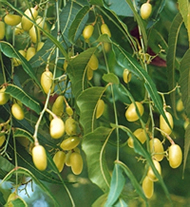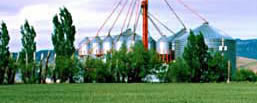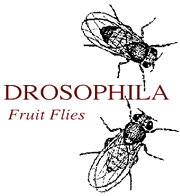
Preview
Material for Exam 4 - Fall 2003
Print
the PDF version (no pictures, better printing)
Pitcher plants are carnivorous plants that capture food by the pitfall method. Specialized leaves form a pit (the pitcher) which fills with rainwater and digestive enzymes that are produced by the plant itself. Tropical pitcher plants belong to the genus Nepenthes. Insects and other small animals are attracted to the plant by color, odor, and nectar. The nectar is strategically located so that animals must land on the pitcher in order to obtain the nectar. The rim and upper sides of the pitcher are covered by a slippery substance that helps capture unwary prey that land on the surface. Downward pointing hairs make it difficult for visitors to escape the pit once they have fallen in. The prey drown in the fluid and are digested (decomposed). As their bodies decompose, nutrients are made available to the plant.
Although ants make up a large portion of the diet of some pitcher plants,
those ants in the genus Colobopsis have a special relationship with
Nepenthes in
Borneo. These ants make their nests in the hollow portion of the plant
under the pitcher and obtain nutrients and energy from the plant's
nectar. They climb
up and dive into the plant's digestive juices and paddle about, patrolling
the liquid trap where they collect large (cricket-size) prey items. Several
adult ants haul the insect up out of the pitcher for a communal feast.
This benefits the plant because when large prey items pile up in
the pitcher and
start to decompose; the juices turn foul and then the plant is unable to
digest anything (plant indigestion). It is thought that the ants
are protected from
digestion because their tissues contain enzymes that block/disable the
digestive juices.
The evolution of carnivorous plants is thought to be the result of a
lack of nutrients in soil. All Nepenthes grow in extreme habitats
of nutrient-poor
soil,
and by capturing their own food they obtain essential nutrients.
 source
source source
sourceoC above the environmental air temperature. The skunk
cabbage can grow up through a thin layer of ice by melting it very early in
spring. The high temperature of the flower releases compounds that have a skunk-like
odor, attracting certain insects that pollinate the plant. source
source source
source source
sourceA scientist interested in ticks attempts to breed individuals of Ixodes ricinus and Ixodes dammini both within and between groups. To make breeding groups, he places equal numbers of each type in jars as follows:
| Jar 1 | Jar 2 | Jar 3 | Jar 4 | |
Contents: |
Ixodes ricinus males and females |
Ixodes dammini males and females | Ixodes ricinus males and Ixodes dammini females |
Ixodes dammini males and Ixodes ricinus females |
A scientist kept track of a population of insects in one section of the
grain storage bin. At the beginning of the first year, population size (N)
was 100 insects.
 source
source source
sourceOne hundred flies from the original wild population under study were placed
in a shipping container and sent to a biologist in Japan. Unfortunately,
the plane crashed and the fly container broke open on an island in the Pacific
Ocean. This founding population of flies found good fruits to feed on and
suitable places to rest on the island. However, a species of dragonfly, a
carnivorous insect already living on the island, became a predator of the
marooned fruitflies. Many of the flies with the timeless allele (T) were
eaten by the predator, which sneaks up on them when they are resting.

 source
source source
source source
sourceDogs, like people, sleep. Some dogs fall asleep in the middle of activities, as do some humans. This condition is called narcolepsy. In most Labrador retrievers (Labs), a dominant autosomal allele (A for awake) results in formation (synthesis) of a polypeptide (protein) that is stored in axon bulb vesicles of neurons in the brain. When the protein is released into the synapse, it results in a postsynaptic action potential in neurons. The firing of the neurons keeps the dog alert except when it is really tired and ready to sleep. Dogs with the dominant allele do not fall asleep at inappropriate times. Some Labs, however have narcolepsy caused by the recessive allele (a) which results in an abnormal protein produced in the brain.
A kennel owner who bred
and trained Labs received a puppy named Terri. Terri fell asleep when her
owner took her hunting instead of retrieving ducks that
had been shot. Terri became unexpectedly pregnant while her owner was on
vacation and she produced a litter of 10 puppies. As Terri’s puppies
became adults, the owner discovered that four (4) of them also fell asleep
in the middle of
duck hunting like their mother. Other puppies in the same litter with the
narcoleptic puppies had no trouble staying awake.
 source
source source
source source
source source
source